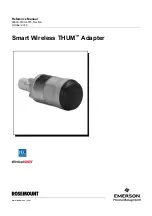
Fabric OS 6.2 administrator guide 347
• HP StorageWorks DC SAN Backbone Directors, .
•
Ports in a TI zone must belong to switches that run Fabric OS 6.0.0 or later. For TI over FCR zones, ports
must belong to switches that run Fabric OS 6.1.0 or later.
•
Traffic Isolation Routing has limited support for FICON FCIP in McDATA Fabric Mode (interopmode 2),
in the following configuration only:
• HP StorageWorks 400 Multi-Protocol Router with E_Port connections to an M-switch and VE_Port
connections to another HP StorageWorks 400 Multi-Protocol Router.
• Devices attached to M-switch only.
Following is a sample configuration:
Devices — M-switch — HP StorageWorks 400 Multi-Protocol Router — HP StorageWorks
400 Multi-Protocol Router — M-switch — Devices
•
Fabric OS 6.1.0 or later supports Traffic Isolation Routing in a mixed fabric (that is, a fabric with
Fabric OS and M-EOS switches) operating in interopmode 2. Traffic Isolation Routing is not supported
in fabrics configured in Open Fabric Mode (interopmode 3).
•
Traffic Isolation Routing is not supported in fabrics with switches running firmware versions earlier than
Fabric OS 6.0.0. However, the existence of a TI zone in such a fabric is backward-compatible and
does not disrupt fabric operation in switches running earlier firmware versions.
TI over FCR is not backward compatible with Fabric OS 6.0.x or earlier. The -1 in the
domain,index
entries causes issues to legacy switches in a zone merge. Firmware downgrade is prevented if TI over
FCR zones exist.
•
In interopmode 2, a zone member for a TI zone is limited to a port index of 255 or less.
•
VE_Ports are supported in TI zones.
Trunking with TI zones
Note the following if you implement trunking and TI zones:
•
To include a trunk group in a TI zone, you must include all ports of the trunk in the TI zone.
•
Trunked ISL ports cannot be members of more than one TI zone.
Limitations and restrictions of Traffic Isolation Routing
The following are limitations of TI zones:
•
For switches running Fabric OS 6.1.0 or later, a maximum of 255 TI zones can be created in one fabric.
For switches running Fabric OS 6.0.x, no more than 239 TI zones should be created.
A fabric merge resulting in greater than the maximum allowed TI zones results in merge failure and the
segmented fabrics.
•
A TI zone can be created using D,I (Domain, Index) notation only, except for TI zones in a backbone
fabric, which use port WWNs. See ”
Traffic Isolation Routing over FC routers
” on page 342 for
information about TI zones in a backbone fabric.
•
To include a trunk group in a TI zone, you must include all ports of the trunk in the TI zone.
•
Two N_Ports that have the same shared area should not be configured in different TI zones. This
limitation does not apply to E_Ports that use the same shared area on the HP StorageWorks SAN
Director 48 Port 4Gb FC blade and HP StorageWorks SAN Director 48 Port 8Gb FC blade.
•
Ports that are in different TI zones cannot communicate with each other if failover is disabled.
Admin Domain considerations for Traffic Isolation Routing
Note the following if you implement Admin Domains and TI zones:
•
TI zones are applicable only in AD0, and the E_Ports that are members of a TI zone must be in the AD0
device list. Because TI zones must use D,I notation, the AD0 device list must be declared using D,I
notation for ports that are to be used in TI zones.
•
A port used in a TI zone should not be a member of multiple Admin Domains.
Summary of Contents for A7533A - Brocade 4Gb SAN Switch Base
Page 1: ...HP StorageWorks Fabric OS 6 2 administrator guide Part number 5697 0016 Edition May 2009 ...
Page 24: ...24 ...
Page 99: ...Fabric OS 6 2 administrator guide 99 ...
Page 100: ...100 Managing user accounts ...
Page 118: ...116 Configuring standard security features ...
Page 164: ...162 Configuring advanced security features ...
Page 234: ...232 Installing and maintaining firmware ...
Page 268: ...266 Administering advanced zoning ...
Page 284: ...282 Configuring Enterprise class platforms ...
Page 292: ...290 Routing traffic ...
Page 294: ...292 Interoperability for merged SANs ...
Page 302: ...300 Configuring the Distributed Management Server ...
Page 334: ...332 iSCSI gateway service ...
Page 340: ...338 Administering NPIV ...
Page 407: ...Fabric OS 6 2 administrator guide 405 ...
Page 408: ...406 Using the FC FC routing service ...
Page 438: ...434 Administering extended fabrics ...
Page 460: ...456 Administering ISL trunking ...
Page 516: ...512 FICON fabrics ...
Page 526: ...522 Configuring and monitoring FICON Extension Services ...
Page 540: ...536 Configuring the PID format ...
Page 544: ...540 Understanding legacy password behavior ...
Page 546: ...542 Mixed fabric configurations for non merge SANs ...
Page 550: ...546 Migrating from an MP Router to a 400 MP Router ...
Page 558: ...554 Inband Management ...
Page 572: ...568 ...
















































